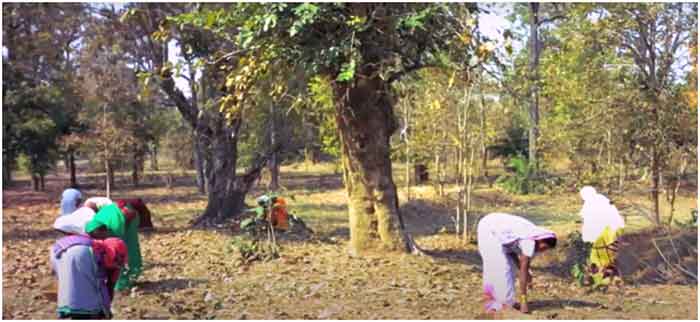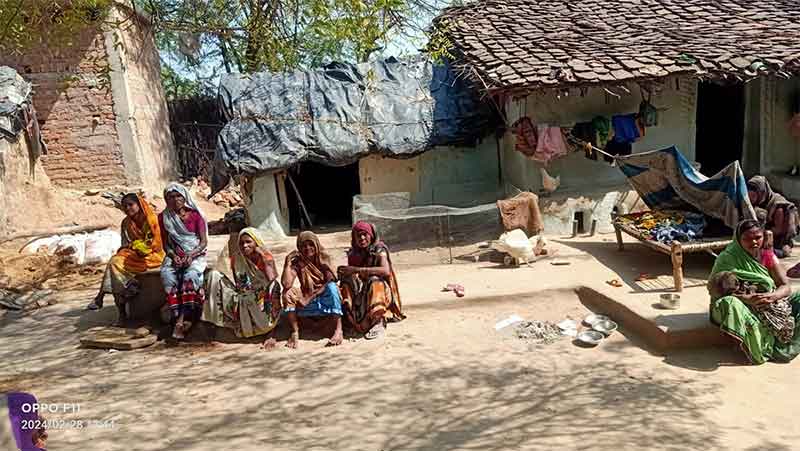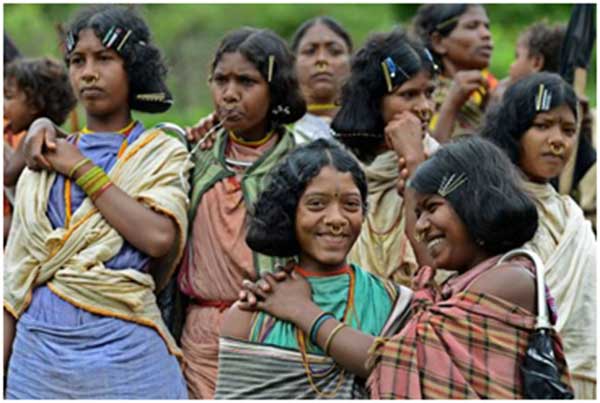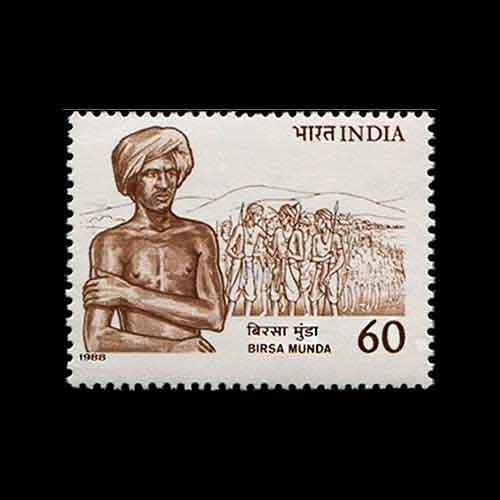Written by Aman Rathi, Ashutosh Rungta and Darpan Jain
It was a fine morning, about 4 AM, in a remote village named Beliyapal, in the state of Chhattisgarh. Shiv Kumari, a tribal woman of around 40 years, readied herself to make her way to the jungle. She would walk about 5-6 km deep in the wilderness with a basket ready to collect minor forest produces (MFPs). Sal seeds and tamarind are usually found in the nearby areas. Along with some of her tribal woman friends, she would collect these and bring them back home on her headload. Every day an estimated weight of 10 kg is harvested by her, the maximum capacity she could carry on her head and walk long distances with.
By around 7-8 AM, she would reach back home, leave the produce, and feed her husband and children. After doing some household chores, she would sit and do some manual cleaning of the produces, like removing shell and fiber from tamarind. This is now ready for sale in the market. Again, she would carry the primary processed form of the MFP on headload and walk 10 km to the most nearby market. It’s almost afternoon, and merchants based out of Jagdalpur district are waiting with their vehicle ready to buy the produce ‘individually’ from these women. Sacks and manual weighing machines are already present in their mini truck. Merchant’s operative would take the head load from Shiv Kumari and place it on the weighing machine. Seeing the quality and desperation of Shiv Kumari, there would be some sweet-talking between the two, and Shiv Kumari would take the money and head back home. Sometimes, Shiv Kumari would exchange the produce for daily essentials like salt or sugar without discussing the price. The barter system is not unusual for the two. Essentials like salt and sugar were not readily available in the remote villages and bought by tribals through these traders only.
Seeing Shiv Kumari’s desperate need for cash, the merchants exploit her (and other tribal women) by very low pricing or establishing that the product is of lower quality. Shiv Kumari cannot go to other traders because she has been dealing with this merchant for a long time and also has a loan taken from him. Moreover, traders have formed a cartel, meaning no one would raise the buying price of the produce, compelling Shiv Kumari to compulsorily sell at the quoted price. Shiv Kumari does not even realize that she has been exploited through unfair practices and predatory pricing. Weighing mechanisms are under the control of the trader, and no transparency is available.
Such one-sided ‘trade’ has been happening countless times every day for almost a century now. The value of these MFPs is estimated to be a whopping INR 2,00,000 Cr. a year. There are an estimated five crore Shiv Kumaris in tribal India, who gather this produce every day and sell it in an under-priced market purely controlled by middlemen. These MFPs that start their journey at the backyards of Shiv Kumaris end up being used for most daily essentials like healthcare, beauty-care, etc. However, these Shiv Kumaris, the rightful owner of these produces, end up getting less than 10% of the final value.
People dwelling in the forests have the rightful ownership to its produces as per The Provisions of the Panchayats (Extension to Scheduled Areas) Act, 1996, or PESA. However, the Act did not define the MFPs and suffered from technical deficiencies. Traditional forests were a mix of trees, fruits, flowers, roots, etc., that were sufficient for livelihood and income generation. However, the diagnosis of the situation revealed that a lack of recognition of rights was making these forest dwellers shift away to other sources of income like being agriculture laborers. Another issue that comes up is the restriction by the Forest Department to avoid over-extraction. It is a fact widely known that forests in India have survived mostly in areas with a high percentage of tribals. But these tribals have always been exploited in one form or the other. This called for a strong need to recognize the rights of the tribals and provide a constant source of livelihood with increased income and save them from exploitation by the middlemen.
Another critical issue that surfaced was the lack of collective strength among tribals to negotiate and interact equitably with the mainstream merchants. Hence, collective resilience in the form of SHGs and fair-trade practices could help in increasing the income of Shiv Kumaris, who somewhere are the sole earner of the family.
Tribals share a symbiotic relationship with the forests. Tribals live ‘one-day-at-a-time’ by depending on the forests for their daily earnings, different from the urban populace. The unequal market and forest dweller relationship highlights the need for intervention by the state. Forests are nature’s bounty and communities thriving on it know its real value and ability to conserve and protect them. They can differentiate between tree growing and natural forests. Blaming the tribals for overexploitation of forests while enjoying the luxury of products made through them shows the hypocrisy in the society in recognizing the rights of the tribals.
Sustainable livelihoods in the natural forests’ region will require upliftment of the community and restoration of their rights while stopping the exploitation by the middlemen. The returns on non-timber forest produce or MFPs are required to be protected by ensuring some minimum support prices and procurement agencies in a decentralized manner, to the level of a village to stop the destitution faced by the tribal communities. For a successful intervention, the modalities need to be looked at carefully while criminal offenses such as incorrect pricing and unfair practices in weighing, etc., need to be stopped immediately.
And this is exactly what happened. In 1997, one eventful day, the District Collector of Bastar, Shri Pravir Krishna, IAS officer of the 1987 batch (MP cadre), noticed this rather unusual practice in the market. A tribal woman was seen exchanging the precious collection of ‘mahua’ for a packet of salt or selling it for a meagre price of ₹0.5/kg while the market price was ₹5/kg. Mr. Krishna could not stand the predatory malpractices by these traders.
In his own words, he felt that it would be a crime not to take any action against such practices. Section 144 of the Tribal Atrocities Act deems all such practices illegal, and the same was enforced in the area to cull the middlemen. The nature of the act puts the burden of proof on the accused, and therefore this stirred a revolt within the cartel of traders who then brought in several court cases against the Collector – 35 as he recalls in our conversation with him. However, he was a man on a mission who was not going down this easily. He self-represented himself when his lawyer could not show up and gradually started building momentum. Mr. Krishna wrote endless letters and memos to the PMO and State Ministries. Traders started harassing him, and he wrote to the top brass again, this time seeking legal protection and support. A full team was commissioned, and a report was presented to senior officials in New Delhi. The issue had finally escalated and was being discussed in places where it really mattered!
Mr. Krishna, through his efforts, was able to get a corpus of INR 50 crore (in those times!) created and sanctioned for the welfare of the tribals by ensuring a minimum purchase price of around INR 6 per kg for tamarind, as compared to INR 0.50 per kg earlier! Also, the barter system was deemed as atrocious and strict actions were taken against it. To facilitate all this, an elaborate monitoring and control system was set-up wherein all government officials (DFOs, SDOs, etc.) were connected through wireless devices like walky-talkies and tasked with reporting any such practice in the nearby areas. On the ground level, 2400 SHGs were created to bring a collective effort of tribals to fight against such exploitation. The SHGs helped ensure that the traders could not single out a few tribals and exploit them. All the transactions at the markets, known as ‘haat bazaars,’ were recorded and the transactions report was made available for audit. What started as a one-manned mission to get fair prices for the tribals had slowly transformed into a movement.
But, the traders would not give up quickly, and soon the then chief minister decided to intervene. Mr. Krishna recalls how the helicopter of the chief minister landed in Kondagaon and he was immediately greeted by the tribals who spoke highly of the ‘Imli Andolan’ and the ‘Imli Man.’ On being interviewed, one of the tribal women expressed her feelings through her hands saying, “Sahab, Pehle hum itna (very small) kamate the” and “is saal hum itna (very large) kamaye hai !!!“. This was enough to convince everyone, and gradually, the middlemen had to learn to live with the new system!
“I remember that on one of my visits, the tribals in one of the villages hoisted me up on their shoulders and started chanting my name, referring to me as Imli man. That was when I realized that this has finally transcended from an initiative to a movement! I finally felt relieved that I had been able to get these tribals some justice. That also meant that this was a battle that I could not lose. I was not fighting for just myself or my self-righteousness but for the lives and livelihood of many generations of these tribals.”, reminisces Mr. Krishna.
Happy with his work, the CM extended him a INR 100 crore corpus in 1999, with a mandate to set up value addition facilities which would completely eliminate the middlemen, further increasing the tribal’s income and solidifying the good work done. Krishna helped set up one large scale and multiple small scale plants where villagers would make and process MFP, while the government would take care of marketing, branding, and selling.
All was going well until an exogenous shock took place! On November 1, 2000, Chattisgarh, India’s 26th state, was carved out of Madhya Pradesh. With this came the new administration, which, like most other governments, wanted to downplay and discontinue the work initiated by the previous government. This, combined with other administrative issues, derailed Krishna’s progress. Funds got choked, his autonomy was reduced, and finally, like many other well-intentioned bureaucrats, he was transferred for not getting in line.
But such was Krishna’s interventions that the improvement in the life of villagers couldn’t be ignored and finally, in a bid to replicate this model throughout the country, the government of India in 2006, passed the Forest Rights Act (hereinafter FRA, 2006) which gave the “right of ownership, access to collect, use and dispose of minor forest produce which has been traditionally collected within or outside village boundaries” to the villagers. This was an improvement over the 1996 PESA Act as it recognized the importance of non-timber forest produce or minor forest produce (MFP) of plant origin like bamboo, cane, cocoons, honey, wax, tendu leaves, and other medicinal plants and herbs in villagers’ earning potential.
The FRA, 2006 has the potential to democratize forest governance by recognizing community forest resource rights (hereinafter CFRs) over an estimated 85.6 million acres of India’s forests (excluding five north-eastern states and J&K), thereby empowering over 200 million forest dwellers in over 1,70,000 villages. It can not only ensure livelihood security and poverty alleviation (economic benefit) but also improve gender justice (social benefit) and forest conservation (environmental benefit) by empowering local communities. By securing land and resource rights, it is also an opportunity to address left-wing extremism.
Good in theory, the practical benefits from FRA, however, have remained muted due to poor implementation. Till 2016, only 3% of the potential of CFR rights could be achieved. While some states like Maharashtra, Odisha, and Kerala have performed well, most states fare below par. If we talk about Chattisgarh itself, it has implemented Individual Forest Rights (IFRs) and Community Rights (CRs) but has ignored the CFRs. The CFRs are especially important as they recognize the gram sabha’s authority and responsibility to protect, manage and conserve its forests for sustainable use and against external threats. The absence of political will, lack of effort to build capacity in the Central nodal agency (Ministry of Tribal Affairs), and inadequate investment in implementation and monitoring by both central and state governments have restricted the act to the paper itself.
But, in mid-2017, life came full circle as the man that started it all, Mr. Pravir Krishna, was appointed as the Managing Director of the Tribal Cooperative Marketing Development Federation of India (TRIFED), a national level cooperative body with the primary mandate of bringing about socio-economic development of tribals. In many ways, TRIFED works as a market developer and service provider for tribal products, a similar initiative that Mr. Krishna was working on in Bastar, with the INR 100 crore corpus before he was transferred.
Under Mr. Krishna’s brief stint till now, TRIFED’s turnover has quadrupled, hence, benefiting over 2.5 lakh tribal handloom and handicraft producers. There have been other changes as well. The Ministry of Tribal Affairs has come up with a Minimum Support Price (MSP) for almost 50 varieties of MFPs (MSP for MFP as it is famously known), again something that Mr. Krishna’s work 20 years ago laid the basis for. Besides MSP, TRIFED is helping the tribals to value add in order to sell their products in the market at higher prices. For example, tamarind in its raw form sells at around Rs 30 in the market. However, the deseeded and defiberised form would sell at around Rs 120. Further, the more refined forms such as powder, chutney or sauce would sell for around Rs 400. These primary level value additions can be made in the village itself. As Mr. Krishna himself says, “We first want to provide tribals the Minimum Support Price (MSP) for their produce and then give them access to facilities to value add and then sell at a much higher price.”
The latest project Krishna and TRIFED have been working on is the ‘Van Dhan’ Tribal Start-up Yojana. With this, the aim is to generate livelihood for tribal gatherers and transform them into entrepreneurs by setting up community-owned Van Dhan Vikas Kendras. Each Kendra is slated to constitute 15 tribal SHGs, each of which comprises around 20 tribal gatherers, hence, taking the number of beneficiaries per Kendra to 300. Each Kendra would be provided Rs. 15 lakhs by the Central government. The Kendras aims to train the tribals in equipment procurement, value addition, and enterprise management. With many tribals returning to their villages after losing their city job due to the coronavirus pandemic, this scheme has the potential to provide both short and long-term relief and employment generation. However, whether this scheme can translate its theoretical benefits into practical welfare remains to be seen. With Krishna at the helm, let’s hope it does!
No doubt that Mr. Krishna has made the ’50 Most Influential Indian 2020′ list by Fame India magazine, Asia Post, and PSU Watch. Both his inclusion in the list and MDship of TRIFED has an interconnected reason. His passion for a permanent change in the trade-cycle of forest produces in favor of rightful tribals is visible in his ongoing tenure with TRIFED.
Written by Aman Rathi, Ashutosh Rungta and Darpan Jain, Second-year PGP Students at IIM Ahmedabad
SIGN UP FOR COUNTERCURRENTS DAILY NEWSLETTER


















































